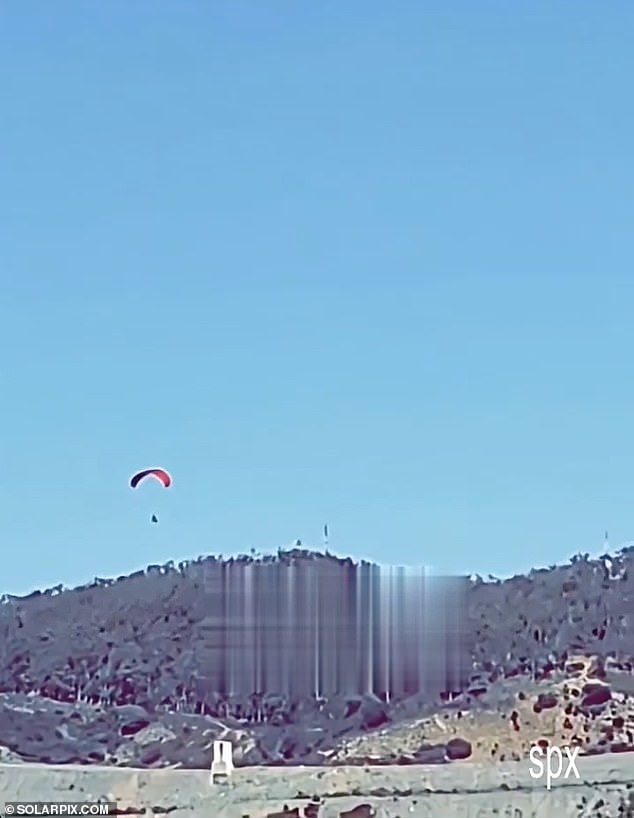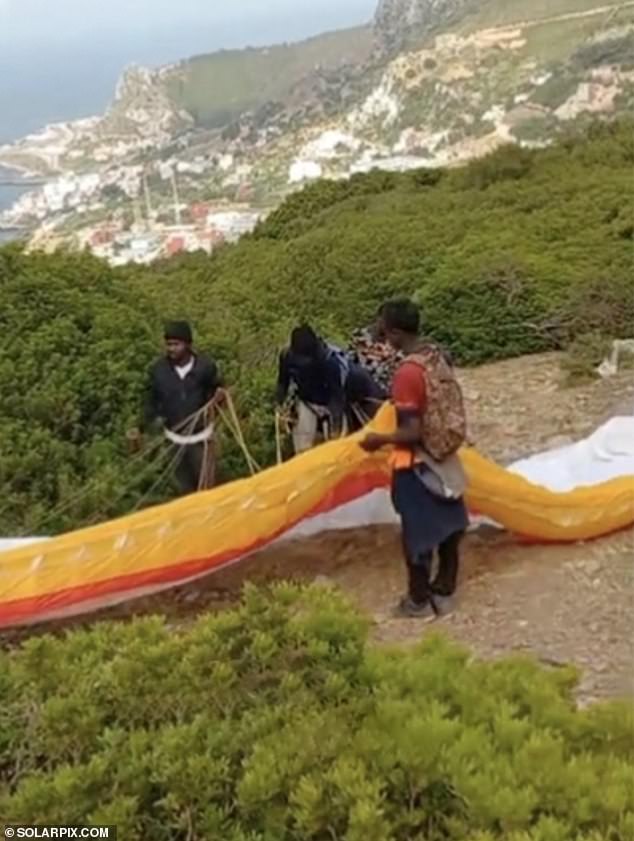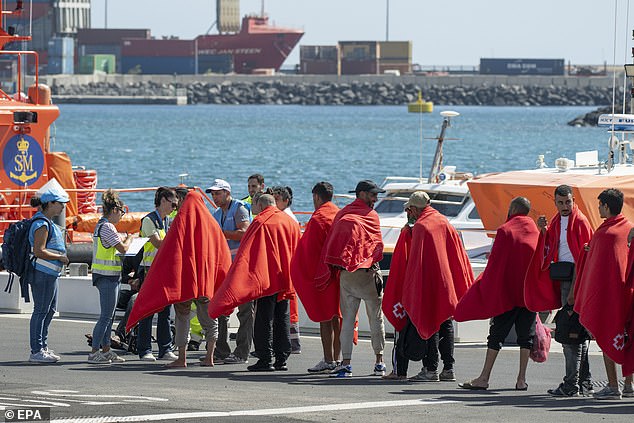This is the astonishing moment an illegal migrant took to the skies to paraglide into Europe, landing in a Spanish enclave over a heavily fortified border fence.
Stunned police raced to the area after witnessing the daring aerial crossing on security cameras.
But all they found from a search of the spot where the mystery man landed was the abandoned multi-coloured paragliding gear in the undergrowth.
The successful border breach was the first of its kind ever attempted or accomplished in this particular area between Morocco and Spain’s North African enclave of Ceuta, opposite Gibraltar.
Similar paragliding attempts have been made before in other parts of the border region.
Footage of the historic action showed the migrant flying over the Jebel Musa mountain in Morocco before he landed on European soil in Ceuta’s Sidi Ibrahim area, which is popular with weekend hikers and mountain bikers.
An investigation was ongoing today to try to discover the paraglider’s identity. It was not clear this morning if he was a Moroccan or sub-Saharan African.
Local reports today pointed to him being in his early twenties amid speculation he had timed his crossing to coincide with the regular transfer of migrants from Ceuta to the Spanish mainland to decongest its crowded CETI reception centre.
A well-placed police source said overnight: ‘We don’t think many more will try it. It’s expensive and risky and something you need to be experienced in.’

An illegal immigrant stunned police when he successfully paraglided into Europe, the first of its kind in the area

The illegal arrival managed to escape, leaving behind the multi-coloured paragliding gear he had used
Ceuta, one of Spain’s two North African enclaves, is more used to dealing with migrants climbing over the heavily-fortified fences that separate it from Morocco.
Others have jumped into the sea to swim to Ceuta.
The risky entry method is far less used, but a Somalian who managed to swim to Ceuta from the Moroccan town of Beliones, just over four miles away, is currently awaiting a transfer to the Spanish mainland.
The Civil Guard are said to have been alerted to the possibility of an aerial crossing this summer after groups of sub-Saharan Africans who had managed to make it to Morocco recorded videos they posted on TikTok showing paragliding gear.
One local paper claimed overnight they had even published a guide on how to do it and marked out recommended routes where the border fencing was ‘more vulnerable.’
In May, a police officer was injured after trying to prevent migrants from climbing into Ceuta from Morocco over the two parallel fences, each approximately 32ft high and topped with inverted razor wire.
Electronic sensors and high-intensity lights also integrate a system designed to be impassable.
In August Spain’s Ministry of Interior revealed 1,452 undocumented migrants had managed to get into Ceuta by land between January 1 and July 31, a 7.2 per cent increase on the figure for the previous year.
As well as climbing over the border fencing, some are smuggled into the North African enclave in cars.
In November 2019, police arrested a Moroccan kamikaze driver who smashed through a border checkpoint at high speed with 52 African migrants, including a five-month-old baby in the back of his van.
Four people needed hospital treatment after the incident. The 34 men, 16 women and two children in the back of the van were all sub-Saharan Africans.
They were picked up by police after fleeing the vehicle once it had reached Spain, with many running towards Almadraba Beach before taking shelter from the rain on the roof-covered terrace of a coffee shop near the seafront.

Several migrants arrive in Spain after a boat carrying 30 people was rescued. The country has been struggling with an influx of migrants arriving in small boats
In May 2015, an eight-year-old boy was found curled up inside a ball inside a suitcase on the same checkpoint after police stopped a Moroccan teenager paid to take him across the border.
The youngster, who was called Adou Ouattara and came from the Ivory Coast, later became the subject of a book written by a journalist who detailed his family’s desperate attempts to be reunited in Europe.
A month later, police opened up the bonnet of a battered car at the El Tarajal border to find a migrant from Guinea squashed up widthways with his upper body by the hot engine and his legs near the windscreen washer.
In February 2017, hundreds of bloodied and emotional Africans were filmed shouting ‘Viva España’, ‘We Love You España’ and ‘Boza, boza’, which means ‘Victory, victory’ as they beat their chests in a show of joy at making it across the border fencing into Ceuta from Morocco when it was around half the height it is now.
Many were bare-chested and barefoot, and others were bleeding from deep cuts they had suffered crossing into Europe.
Local authorities said at the time they believed around 900 immigrants had attempted to storm the fence, and more than 400 had managed to cross it.